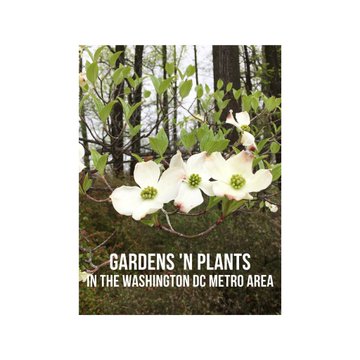Pollinate, as defined by Merriam Webster is a verb. It means – to give (a plant) pollen from another plant of the same kind so that seeds will be produced. I compare garden podcasting as a way to pollinate the mind. As a garden communicator, I have recently found joy outside the garden, as a podcaster. In my opinion, podcasting is a way of pollinating my listener’s minds, thereby sowing seeds to encourage gardening.
POLLINATE BY PODCAST
Just like the garden, this world of podcasting is diverse. Each podcast has a style that reaches the mind of the listener. Depending on your style, there is a podcast where information is shared which fits your taste. The perception that there is only one way to learn about the garden is as extinct as the dinosaur. Here are a few local ways that podcasting is a conduit to pollinate the mind.
WORDS, PEOPLE, PROSE
I love to read, meet all types of people, visit great gardens, and well, a good poem always brings me joy. Anchor.fm is the allotment where I plant a few seeds. It is on this platform I share people in horticulture, poetry, or a few words about finding the beauty that surrounds us. I try to introduce others to the coolest plants people, horticulturists, plants, books, and whatever else I find interesting. Of course, it is called Cottage In The Court.
It is all about the garden in my world. I must warn you…my world is truly the world. My best friend is an affordable trip to a garden, of course! Why not listen here. Subscribe…I have so much to share!!
GARDENS’N’PLANTS…OH MY!

This is a collaborative podcast that a friend of mine, Peggy Riccio of PegPlants.com, and I are growing. Together we co-host, Gardens’nPlantsPodcast where we talk about what is going on in our gardens, places we visit, and activities throughout the DMV (DC, Maryland, and Virginia). We are two Garden Communicators and members of GardenComm, International who share our love of gardening. It is a great way to know what is blooming, where to go, and activities that embrace gardening. At the moment we are bi-weekly. However, as we begin to move about freely, you just might hear from us a bit more. You can listen to us here. Subscribe…we are growing!
WAIT A MINUTE…HOE ON!
The world of garden podcasting world is amazing. The University of Maryland has even been bitten by the bug!! Proving that collaborative efforts are meaningful The Garden Hoes are a thing. These hosts have some serious “garden cred”.
Emily Zobel, Mikaela Boley, and Rachel Rhodes are The Garden Hoes. A podcast supported by the University of Maryland is chock full of certified, verified information anyone can use. Once a month The Garden Hoes disseminate information that is seasonally appropriate. There is also a Q&A email to ask and get qualified answers about the garden. The University of Maryland has so much to offer, subscribe, and stay in the know!!
NATIVELY SPEAKING…

For a discussion about natives, my friend John Magee hosts The Native Plant Podcast. First of all, for over 20 years, John Magee has earned the recognition and respect of his peers in the world of horticulture. John is known for designing sustainable, as well as eco-friendly spaces. On his podcast, John delves deeply into native plants, truly cool people, and discussions on ecology. You really learn a lot about the topics, as well as the people John chooses for The Native Plant Podcast. If you subscribe, I promise you will not want to miss an episode.
WASHINGTON GARDENER MAGAZINE…AND PODCAST TOO!

Washington Gardener Magazine is a part of the Washington DC landscape. This magazine is one of the reasons many in the Mid Atlantic have discovered the joy of gardening. Beginners, as well as seasoned gardeners, have looked to Washington Gardener magazine to pollinate thoughts of bodacious gardens. Now, Kathy Jentz has been bitten by the bug. GardenDCPodcast is where one can find plant profiles, seed swap discussions, voices of people in horticulture, and more. Remember…subscribe and follow.
When resources are needed to amplify the voice of gardening, there are many I can name. There is a community of garden communicators who are unique. Each has diverse listeners, with similar interests, and different listening styles. Just like the insects that pollinate our gardens, each listener will have a different perspective on how they want information delivered. From Blogs, talks, interviews, and now podcasts to pollinate our minds…gardening just got better!
Here are a few other podcasts you might want to listen to:
Plantrama.com, The Gardenangelists, Cultivating Space, Steven Biggs, …just a few of my favorites. Pollinate your need to garden and listen to a podcast on gardening. Don’t forget to subscribe!! It is a great way to feed the soul.
Putting on my headset, turning on the microphone, and chatting with friends who pollinate my heart,
Teri, Cottage In The Court
















